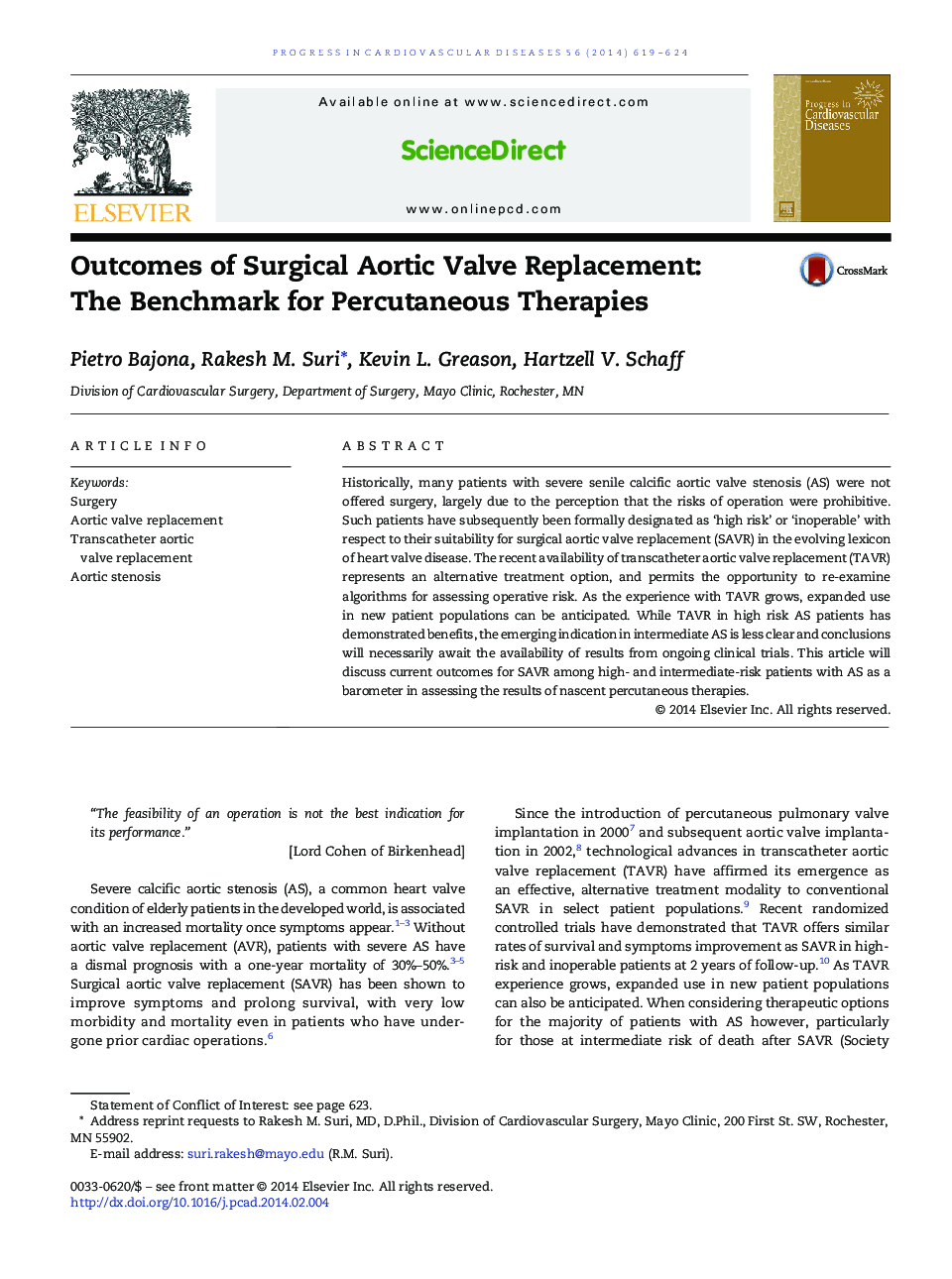| Article ID | Journal | Published Year | Pages | File Type |
|---|---|---|---|---|
| 3006476 | Progress in Cardiovascular Diseases | 2014 | 6 Pages |
Historically, many patients with severe senile calcific aortic valve stenosis (AS) were not offered surgery, largely due to the perception that the risks of operation were prohibitive. Such patients have subsequently been formally designated as ‘high risk’ or ‘inoperable’ with respect to their suitability for surgical aortic valve replacement (SAVR) in the evolving lexicon of heart valve disease. The recent availability of transcatheter aortic valve replacement (TAVR) represents an alternative treatment option, and permits the opportunity to re-examine algorithms for assessing operative risk. As the experience with TAVR grows, expanded use in new patient populations can be anticipated. While TAVR in high risk AS patients has demonstrated benefits, the emerging indication in intermediate AS is less clear and conclusions will necessarily await the availability of results from ongoing clinical trials. This article will discuss current outcomes for SAVR among high- and intermediate-risk patients with AS as a barometer in assessing the results of nascent percutaneous therapies.
